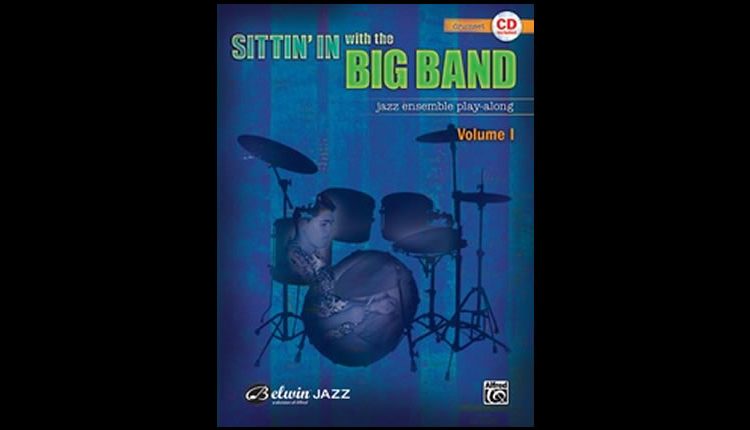SITTIN’ IN WITH THE BIG BAND
Jazz Ensemble Play-Along
Belwin Jazz a division of Alfred
Reviewed by Vince Corozine
This collection of books is written for individual instruments to provide helpful teaching tools for students with limited playing experience. This series of books is very valuable for players who wish to play with a professional big band.
The solos are at the easy to medium-easy level. The books provide an opportunity to play along with a professional jazz ensemble to improve one’s competency. As the student plays along and listens to the players in the band, they will learn blend, style, phrasing, tone, dynamics, technique, articulation and playing in time.
A CD is included with each book. Each arrangement has two CD tracks:
1. Demonstration track. The instrument’s part is in the mix.
Listen to how your part is played by professional musicians to copy the phrasing, intonation, articulation, feel, style, section/ensemble blend and concept.
2. Play-Along track. Your part has been taken out of the mix. You play-along with the big band.
3. Helpful performance notes are included in the back of the book for each song on the CD.
4. There is a two-measure count-off click at the beginning of each play-along track.
Helpful suggestions are offered such as: Use headphones when playing along with the recording to hear it properly, and try recording yourself while you play along, and see how close you can get to sounding as though you are in the band.
There are eleven original songs arranged for big band in a variety of styles: Driving rock, swing, Latin, ballad, jazz shuffle, Latin rock, and funk.
The back-up band behind the soloist is excellent in quality and styling. Solos are written with chord symbols, while dynamics are carefully indicated in the parts.
Playing ranges are comfortable. The highest note for the trumpet is written A right above the treble clef. The player is given the option of playing the A an octave lower, and it is written with both octaves.
It would have been helpful to mark the lead trumpet part “unison” or “divisi/” This will alert the player when to use no vibrato for passages written in unison, or to add a little vibrato, for extra warmth, on some ensemble passages as in ballads.
Books are available for Alto, and Tenor Saxophones, Trumpet, Trombone, Bass, Guitar, and Drums. These books retail at $14.95 and a piano book is available for $16.95.
The notes are large and easy to read with clear articulation and phrase markings.
Vince Corozine Music , Author of “Arranging Music for the Real World” by Mel Bay Publications Web: www.vincecorozine.com
e-mail: vince@vincecorozine.com
(845) 208-3381
10 Veschi Lane North
Mahopac, NY 10541


